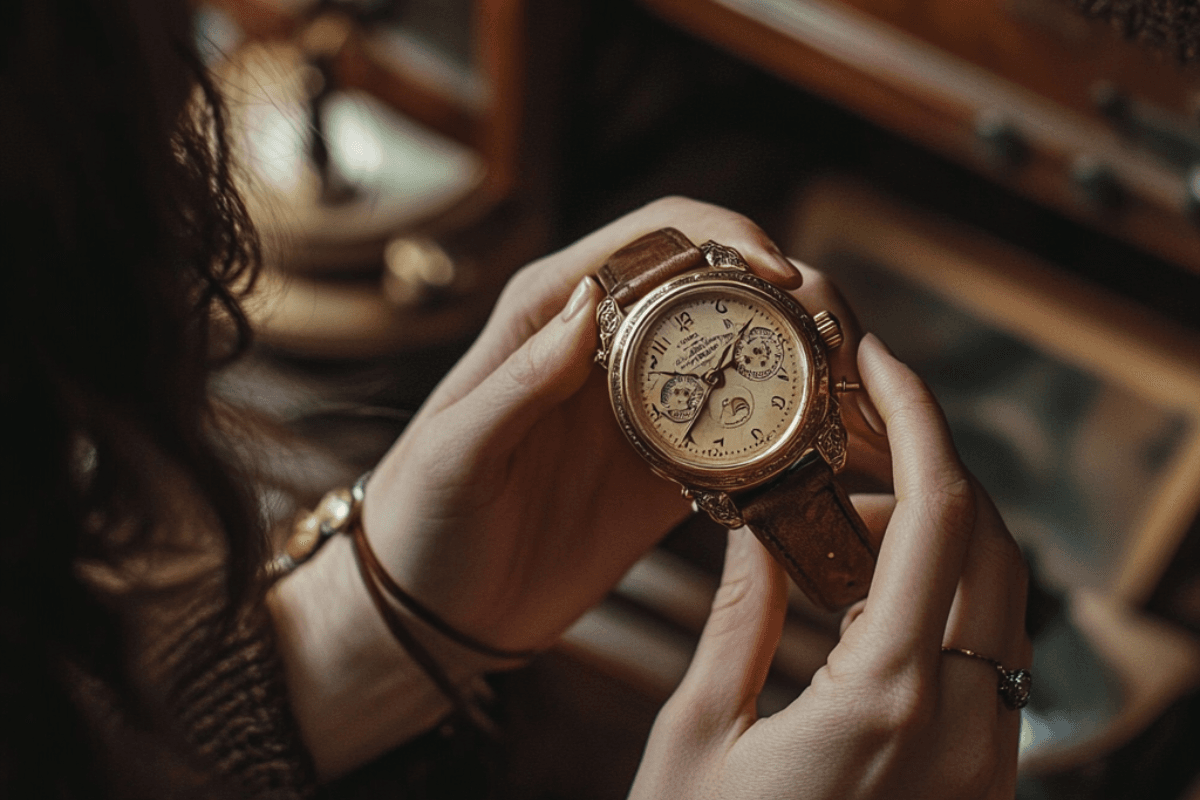
Antique watches for women offer more than just style—they are historical, elegant, and carefully crafted pieces that connect us to the past. For women who appreciate tradition and timeless elegance, antique watches make the perfect accessory. However, choosing antique watches requires attention to factors such as condition, authenticity, and style. This guide will help you navigate the process of buying antique watches that fit your preferences and investment goals.
1. Understanding Antique Watches
What Are Antique Watches?
Why It’s Important:
- Historical Value: Watches that are over 100 years old hold unique historical significance.
- Craftsmanship: Antique watches showcase intricate craftsmanship from different eras.
Key Points:
- Watches classified as “antique” are over 100 years old, while “vintage” refers to watches 20–100 years old.
- These timepieces often highlight the artistry and techniques of their respective periods.
Types of Antique Watches
Why It’s Important:
- Variety: Understanding different styles helps you choose a watch that reflects your taste.
- Historical Context: Each type of antique watch carries its own historical significance.
Key Types:
- Pocket Watches: Once popular for women and men, often designed with detailed embellishments.
- Art Deco Watches: Known for bold, geometric designs from the 1920s and 1930s.
2. Determining Your Style and Preferences
Classic vs. Statement Pieces
Why It’s Important:
- Personal Expression: Your choice should reflect whether you want an everyday accessory or a statement piece.
- Versatility: Consider how it fits into your wardrobe.
Key Considerations:
- Classic Designs: Look for simple, elegant designs, such as round dials with leather straps.
- Statement Watches: Opt for unique designs, such as gemstone-encrusted watches, for a bolder look.
Matching with Jewelry
Why It’s Important:
- Cohesive Look: Ensure the watch complements your existing jewelry collection.
- Enhancing Elegance: Coordinating metals and gemstones enhances your overall style.
Key Considerations:
- Metal Matching: Choose a watch that complements the gold or silver jewelry you wear regularly.
- Gemstone Embellishments: Watches with gemstones can elevate your accessory game when paired with similar jewelry.
3. Assessing the Condition of an Antique Watch
External Condition
Why It’s Important:
- Aesthetic Appeal: The condition of the case, dial, and strap affects the watch’s appearance.
- Value Retention: Well-maintained watches hold their value better over time.
Key Factors:
- Case Condition: Inspect for dents or wear.
- Dial Integrity: Ensure the dial is free from cracks or heavy fading.
Internal Mechanism
Why It’s Important:
- Functionality: A well-maintained movement ensures the watch operates smoothly.
- Maintenance Costs: Watches with serviced movements often require less upkeep.
Key Factors:
- Movement Type: Know whether the watch has a manual or automatic movement.
- Original Parts: Original components increase the watch’s value.
4. Ensuring Authenticity
Research and Documentation
Why It’s Important:
- Avoiding Counterfeits: Proper research ensures you buy a genuine antique watch.
- Verifying Value: Documentation confirms the watch’s authenticity and worth.
Key Tips:
- Serial Numbers: Cross-reference serial numbers to verify the watch’s production details.
- Appraisals: Consider getting a professional appraisal for further validation.
Buying from Reputable Dealers
Why It’s Important:
- Trust: Purchasing from trusted dealers reduces the risk of buying inauthentic watches.
- Support: Reputable dealers often offer warranties or return policies.
Key Tips:
- Dealer Reputation: Research customer reviews and dealer credentials.
- Certification: Ask for a certificate of authenticity or historical documentation.
5. Evaluating the Investment Potential
Rarity and Demand
Why It’s Important:
- Investment Value: Rarer watches with high demand tend to appreciate in value over time.
- Collector Appeal: Certain models and brands are especially popular among collectors.
Key Factors:
- Limited Editions: Watches from limited series or special collections are often more valuable.
- Historical Significance: Watches with notable histories carry added value.
Brand and Model Recognition
Why It’s Important
- Brand Prestige: Watches from renowned brands hold their value and prestige.
- Model Popularity: Research iconic models from luxury brands.
Key Factors:
- Brand History: Brands like Cartier, Rolex, and Patek Philippe are known for their craftsmanship.
- Iconic Models: Certain models are more collectible and valuable due to their legacy.
6. Frequently Asked Questions
How do I know if an antique watch is authentic?
Research the brand, check serial numbers, and seek professional appraisals. Purchase from reputable dealers.
What are the most collectible brands for antique watches?
Brands like Rolex, Cartier, Omega, and Jaeger-LeCoultre are highly sought after by collectors.
How should I care for an antique watch?
Clean it regularly, avoid extreme conditions, and have it serviced by professionals.
Is it worth investing in an antique watch?
Yes, especially if it’s rare, well-maintained, or from a prestigious brand.
Can I wear an antique watch daily?
Yes, but choose a durable model and avoid harsh conditions to protect it.
Conclusion:
Choosing antique watches for women is an exciting way to combine history, style, and craftsmanship. Whether you prefer a classic timepiece or a statement watch, authenticity and condition should always be top priorities when buying antique watches. By following these guidelines, you’ll be able to make an informed decision that reflects your personal taste while offering potential value for years to come.
Post Comment